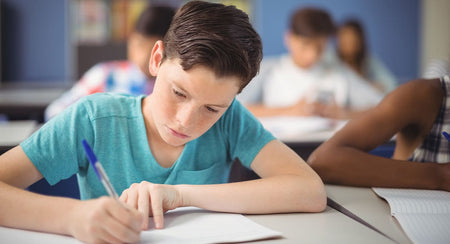There is no question that artificial intelligence (AI) offers a myriad of opportunities to enrich learning for our students. With AI, learning experiences can be more personalized, resources can be more tailored and be accessed quicker, information about student learning progress can be more complete, and suggestions for next steps can be more focused.
However, AI is not a risk-free or an infallible answer to student learning challenges. In fact, there are several potential problems and pitfalls of which we need to be aware and for which we need to be vigilant. Expecting students to rely on AI as their primary learning guide can be a mistake. Without our engagement, coaching, and direction, AI can undermine critical aspects of learning, distract from crucial elements of understanding, and even mislead students regarding what they have learned and need to retain in memory.
Multiple studies have documented the impact of heavy reliance on AI relative to depth of understanding, temporal nature of recall, and absence of accurate information. Here are eight learning risks that AI can present for our students—and strategies we can employ to counter them.
- Cognitive off-loading. Rather than memorizing general information or automatizing key skills, dependence on AI can lead learners to defer to digital sources to provide answers and consequently fail to develop fundamental skills such as mental math, problem identification, and critical thinking. The absence of independent thinking skills and strategies can diminish the effectiveness of students’ use of digital resources and leave them lost when technology tools are unavailable.
Counter strategy: Identify and teach relevant foundational skills in your content area that students need to support their learning and engagement with AI. Periodically review and refresh these skills with students.
- Short-term learning focus. A 2024 study including approximately 1000 students found that solving math problems using AI led to significant performance improvement over students using traditional tools—notes and textbooks. However, when retested without access to AI, their performance growth fell dramatically. While we want students to show short-term learning growth, little is gained when students cannot retain what they have learned.
Counter strategy: Emphasize to students the importance of retaining what they learn. Coach students to engage in such recall-building strategies as distributed practice, retrieval practice, and other activities to strengthen their ability to recall what they learn.
- Diminished attention span. A recent research study on attention spans found that the average attention span has decreased by approximately two-thirds since 2004! The availability of immediate information, constant switching of devices and information sources, and lack of focus have all undermined the discipline necessary to stay with a problem, issue, or topic for extended time. Yet, these are the behaviors necessary to gain full understanding, reflect, and engage in sensemaking.
Counter strategy: Design learning activities that build and strengthen attending skills. Challenge students to gradually extend their focus and build their concentration capacity. Coach them to use approaches such as the Pomodoro Technique that intersperses short breaks following extended (typically 20-25 minute) study sessions.
- Superficial learning. Educational games and applications often focus on success in the simulation but can actually divert attention from the intended learning. Additionally, the immediate availability of answers using AI can compromise depth of understanding and lead to overconfidence in what is learned. Lack of deep understanding can leave students able to answer surface questions but unable to apply and use what they have learned.
Counter strategy: Design learning activities that expose students to deeper concepts and issues. Select instructional and learning strategies that position students to investigate, organize, examine, synthesize, apply, and create as they learn.
- Reliance on biased information. Large language models are a type of AI that rely on information fed into the system to synthesize said information, compose responses, and provide solutions. To the extent that bias has been a part of the information fed into AI systems, it becomes part of what AI accesses for its processing. Several studies have documented the presence of bias in programs ranging from evaluating job applications to facial recognition.
Counter strategy: Give students strategies for recognizing the potential presence of bias. Coach students to consider elements such as the source of information, potential motivation of the source, consistency with other sources, and so on.
- Misled by misinformation. Just because information is generated by AI does not make it true. When AI tools rely on inaccurate data, faulty resources, and inadequate programming, they can produce results that are misleading or inaccurate. Without consulting other sources or benefiting from our guidance, students can find themselves misinformed, misled, and mistaken by the information they access from AI.
Counter strategy: Like examining for bias, we can teach students to identify inaccuracies by consulting other sources, comparing to other known information, and being skeptical when information does not seem correct or is inconsistent with what students already know.
AI can be a valuable resource to support learning and provide access to instant information and insight. However, without our monitoring, coaching, and teaching, AI can also undermine many of the skills and habits our students need to become successful in work and life.
References:
Bastani, H., Bastani, O., Sungu, A., Ge, H., Kabakcı, Ö., and Mariman, R. (2024, July 15). Generative AI can harm learning. The Wharton School Research Paper. http://dx.doi.org/10.2139/ssrn.4895486
Mark, G., and Mills, K. (Hosts). (2023, February). Why our attention spans are shrinking. In Speaking of Psychology. American Psychological Association. https://www.apa.org/news/podcasts/speaking-of-psychology/attention-spans















